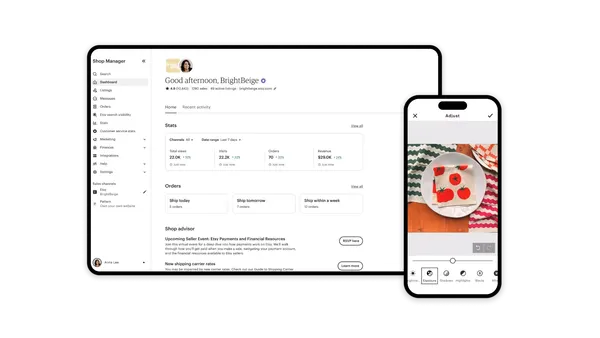As the world adjusts to the new challenges brought by COVID-19, companies across the globe are forced to accelerate digital transformation in order to thrive. In this environment, retail companies are scrambling for ways to future-proof their businesses and find strategic ways to meet the heightened expectations of existing and new customers alike. Many of these expectations constitute the new norm for retail and are expected to stick around for the foreseeable future.
One major shift is in consumer shopping behavior. For instance, Shopify recently reported that during the pandemic, nearly 150 million new shoppers came online for the first time. This means there are a number of net new shoppers who are now more comfortable with making purchases online. In addition, the apparel industry recorded a 49% increase in online orders at the start of the pandemic, which speaks again to more consumers being comfortable with making purchases online.
With this increase in online shopping, comes additional complexity around managing business critical obligations such as sales tax compliance. Due to the 2018 South Dakota vs Wayfair ruling, states can require online retailers to collect and remit sales tax in the states where they have established economic nexus, meaning they have met a state defined transaction volume and/or revenue threshold. The U.S. has over 14,000 distinct tax jurisdictions with changing state sales tax legislation, meaning managing sales tax compliance can be challenging without a clear strategy for tracking and responding to economic nexus obligations. Both SMEs and larger companies are now forced to comply with thousands of rules and regulations depending on where they do business and the channels in which they leverage for selling. Managing all of the pieces manually can be rife with error and oversight without the help of software.
Given the lost revenue resulting from COVID-19, states may consider looking for other revenue streams in the form of sales tax collections. At TaxJar we're seeing that less than 10 percent of new customers are adequately meeting their sales tax obligations. For instance, many companies are not keeping track of where they have economic nexus so they could be underpaying sales tax. Being able to track and meet nexus obligations is a good step towards economic compliance. .
Fortunately, there are steps companies can take to better navigate the twists and turns of sales tax compliance:
- Determine where there is economic nexus
Economic nexus is a state defined amount of sales - either dollar amount and/or transaction volume - threshold within a state. Not only does a physical presence trigger nexus but economic activity within a state can as well. Typically the thresholds are revenue based ($10k - $500k) and/or transaction based (100 - 200 transactions). Today, 47 states have economic nexus laws so tracking them manually (ie through spreadsheets) becomes increasingly cumbersome as a business grows. - Verify which products are subject to sales tax
In the U.S., most physical products are subject to sales tax with a few exemptions. For instance, in N.Y. only clothing priced under $110 is exempt from sales tax. Groceries are not taxed in many states, however prepared meals may be subject to sales tax. These rules change from state to state and within each state so keeping track of this manually can be difficult. - Register for sales tax permits
Once a company determines they have nexus in a state the next step is to register for sales tax permits in those states to begin collecting and remitting sales tax. A company can register for permits themselves or work with a sales tax expert to register on their behalf. Either way it is important to ONLY register once sales tax nexus is established. If a company collects sales tax without taking this step they could run into challenges with the state they are collecting in. - Set up sales tax collection on all sales channels
Once permit(s) have been validated by the state(s) in which a company has nexus they can begin collecting sales tax from customers and remitting to the state. Most states require retailers to collect in one of two ways, origin-based or destination-based. In an origin-based state, such as Texas, online retailers are required to use the sales tax rate of the state they're in to determine sales tax. Conversely, a destination-based state uses the sales tax rate at the buyer's address. This only applies to sales in states where a company has a physical presence -if a company establishes economic nexus in another state they're subject to that state's rates. - Report how much sales tax was collected
When filing returns companies must determine how much sales tax was collected not only at the state level but some states require this information at the county, city, and other special taxing district level. At this step, automation can save countless hours and resources, since the rules change for every state. - File sales tax returns
The final step is filing tax returns with the state(s). Most states now allow online filing which makes things easier, however it's important to file on time as some may fine companies for late filings. It's also worth noting that companies may be required to file "zero returns." A zero return basically informs the state that you are still in business, even if no taxes were collected during the taxable period. States can enact penalties if this step isn't taken.
These are six key considerations or steps when it comes to sales tax compliance in an ever-changing economic landscape. To learn more, check out TaxJar's 2021 Sales Tax Preparedness Guide to dive deeper into each step and ensure sales tax success in the new year.










